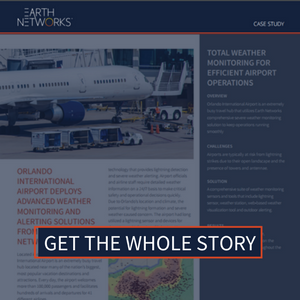5 Pieces of Technology that Keep Crews and Passengers Safe
- Feb 06, 2018
Each year, technological advances make it easier to keep crews and passengers safe. Hundreds of thousands of people fly on airplanes ever day. With those passengers are thousands of crew members that keep things running. While their reasons for flying are different, crews and passengers both require a safe flight. That’s why airport operations teams rely on technology to keep everyone safe.
There are a lot of things that can go wrong from the time people show up at the airport to the time they land at their final destination. These next 5 technology advances, however, make the chance of things going wrong much lower.
Wing Spars

The wings of a plane go through a lot of stress between take-off, cruising altitude, and landing. Any technological advancements that work towards alleviating that stress make flying safer for everyone on board. A wing spar is one of the most important components of a wing because it bears all of the stress. When a wing spar fails, the plane could crash.
Crews use ultrasound to monitor wing spars as well as fuselage skin to check for early signs of failure. The latest technology to avoid wing spar issues is resin-filled nano-structures. If engineers embed these structures into the wing spar material, they could patch cracks as soon as they form. This is key to protecting everyone on board.
Advanced Wheel Bearings
Besides the wings, the wheels of an aircraft are also a very important safety component. The wheel bearings support the entire weight of the aircraft on a surface area of only a few square inches. During landing, wheels accelerate anywhere from 0 to 2,000 rpm in less than one second. Safety features of wheel bearings have to be up to code to ensure safe landings for passengers and crew.
The latest ball bearings are made from new ceramic formulas. These bearings can better resist the temperature changes and physical stresses an aircraft landing entails.
Weather Alerts
The next technology critical to crew and passenger safety are weather alerts. Severe weather impacts all aspects of airport operations. Professionals in the industry can protect both crew and passengers with weather data products and services; including alerts.
One very important alert to have is a lightning alert. Our total lightning network provides warnings for in-cloud lightning and also helps predict wind shear, down bursts, and hail. You can read about how we keep airport operations at Orlando International running smoothly during severe weather in the below case study.
Airport Surface Detection Equipment-X
The penultimate technology on our list is for control towers. The FAA’s Airport Surface Detection Equipment-X basically creates a continuously updated map of all airport traffic. It does this by integrating data from an inbound plane’s GPA unit and the transponder signals from ground vehicles and other planes in the air. That way pilots are aware of everything going on around them.
Cockpit Digital Maps

The final technology airliner should use to keep people safe are cockpit digital maps. While using maps keeps pilots out of trouble, paper maps are simple a thing of the past. Besides taking up a lot of room, they also must be updated regularly to ensure accuracy. With today’s technology, it’s easier for pilots to rely on digital maps. These maps of airports and the surrounding areas are easier to use and include new obstacles and infrastructure. All pilots should carry Electronic Flight Bags that plug into the cockpit navigation systems. Alerts ensure that pilots always update their maps when connected to Wi-Fi.






